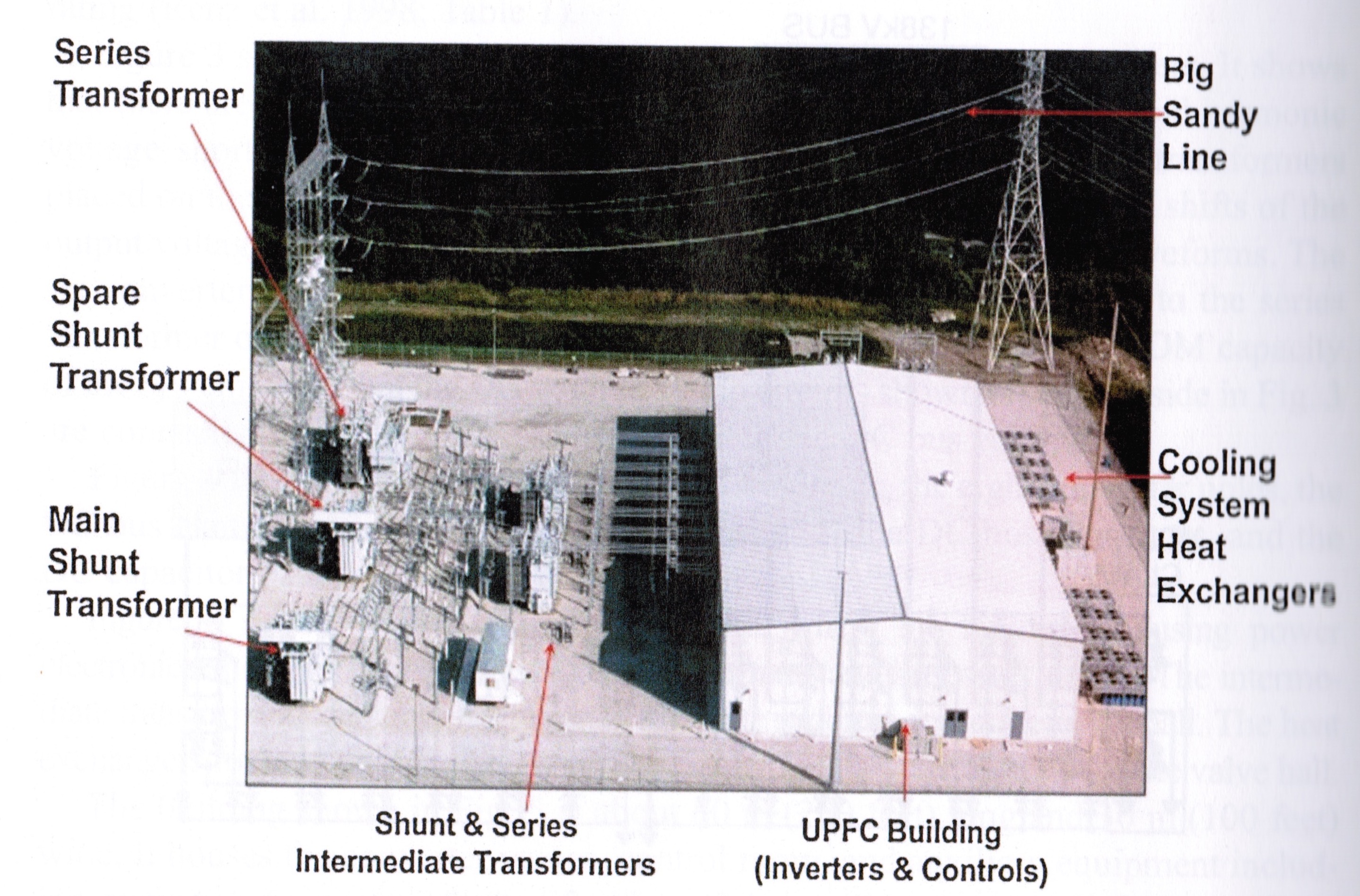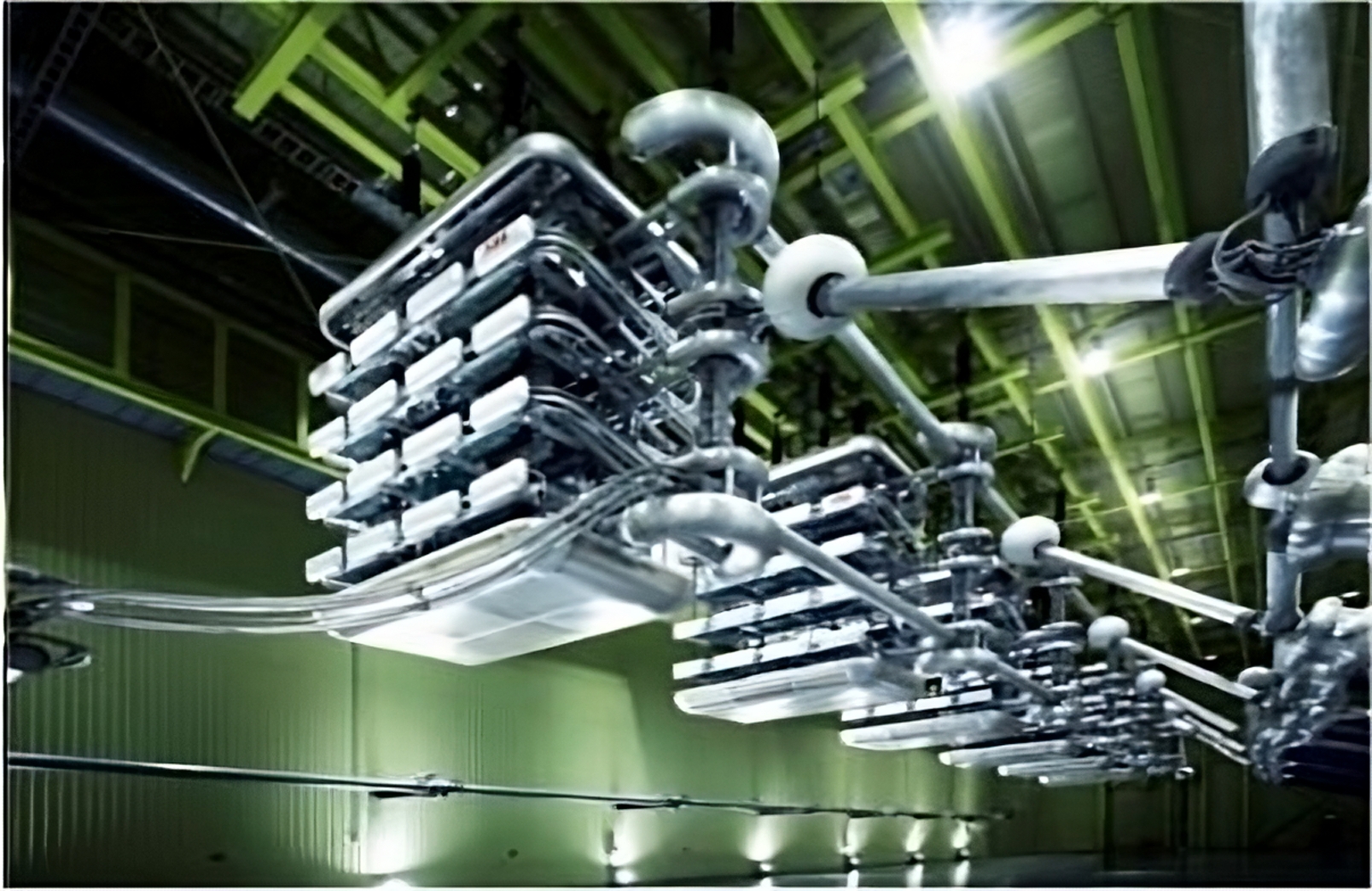P37.116: HVDC Converter Stations and Flexible Alternating Current Transmission System (FACTS) Devices
Objective
This project evaluates high-voltage direct current (HVDC) and flexible alternating current transmission systems (FACTS) technologies. HVDC and FACTS technologies offer options to enhance the capacity of existing lines. A dc transmission system also provides an effective alternative for integrating renewable resources, increasing the overall power system reliability, and transferring bulk power.
Recent advancements in HVDC and FACTS technologies, such as the development of voltage-source converter (VSC) technology, have been significant. As HVDC transmission systems and FACTS are planned, constructed, and refurbished, it is crucial that the power industry access the latest technologies and options to make informed decisions. Guidelines are essential to match applications with available approaches and to assist utilities in the selection between AC or DC systems. Research is needed to address the challenges and reduce costs associated with HVDC and FACTS controllers, thereby increasing their applications. Furthermore, the integration of HVDC and FACTS for renewable energy and smart transmission grids requires further study.
EPRI conducts investigations and develops reference materials that capture and consolidate industry experience and knowledge on HVDC and FACTS technologies. EPRI continues to build a comprehensive library of information to inform technology application and management.
The objectives of this project are to:
- Provide state-of-the-art information on HVDC and FACTS technologies
- Assist members in selecting proper options for renewables integration, increased capacity, and other applications
- Identify new applications and opportunities to reduce costs for HVDC and FACTS
- Develop operational, maintenance, and replacement strategies for HVDC and FACTS
- Identify and conduct research to address knowledge gaps
Research Value
The project can provide the following benefits:
- Research results to aid in the construction and operation of cost-effective HVDC and FACTS infrastructures
- Data to assist in selecting an optimal option (HVDC or HVAC with FACTS) for members’ utility systems
- A comprehensive and current resource for members to stay informed of HVDC and FACTS technologies
- Enhanced overall system controllability, stability, and reliability by using HVDC and FACTS
- Newly developed concepts, such as dc grids and dc circuit breakers to support a smart grid
Approach
This project seeks to enhance knowledge of HVDC and FACTS technologies in the following ways:

Novel Concepts for DC Circuit Breakers and DC-DC Transformers: In recent years, several innovative concepts have been developed to enhance ac-to-dc line conversions and dc grid operations. The tri-pole concept was introduced to maximize power transfer capability, while transformerless voltage source converters were studied and documented. In 2016, the operational challenges of dc grids, along with the requirements for dc circuit breakers and dc-dc transformers, were examined. In 2017, new VSC concepts, including full-bridge modular multilevel converters and cascaded converters, were explored. Compact dc converter stations were studied using simulations in 2018. In 2019, single-arm modular multilevel converter concepts were investigated, leading to prototype development in a lab environment in 2020. That same year, a novel VSC concept with dc fault current-blocking capability was studied, with further prototype development continuing into 2021. By 2022, the state-of-the-art dc circuit breakers, including hybrid-type breakers and dc-dc transformers, were documented. Looking ahead to 2025 and 2026, different VSC topologies, such as the Alternate Arm Converter for fault current limiting, are planned to be documented, along with new dc circuit breaker and dc-dc transformer concepts. Future years intend to see the identification, development, and potential demonstration of new VSC concepts at utility sites using supplemental funding. Each study is prioritized with guidance from members and the industry.

Best Practices for Operation, Maintenance, and Refurbishment for Life Extension of FACTS Controllers – Static Var Compensator (SVC) and Static Synchronous Compensator (STATCOM) Life Extension Guidelines: This task systematically identifies the needs for the operation, maintenance, and replacement of FACTS controllers. Initially, utilities with existing FACTS controllers may be surveyed to understand current maintenance and operation practices, with their needs documented and prioritized. Based on the survey results, best practices for operation, maintenance, and replacement strategies can be developed. Vendor-independent plug-and-play components are necessary to facilitate upgrades of FACTS controllers. The requirements for these components and potential plug-and-play options may also be identified. Life extension guidelines for FACTS controllers, such as SVC, STATCOM, static synchronous series compensators (SSSC), and unified power flow controllers (UPFC), intend to be developed in future years.

Performance and Cost Comparison of FACTS Controllers: In 2018, utility surveys were conducted to understand the operation and maintenance of some of the FACTS controllers, and the best practices were documented. In 2019, FACTS valve cooling system life assessment studies were conducted with utility surveys using practical applications. In 2019, novel control strategies were developed to operate a STATCOM as an active filter to absorb system harmonics. In 2020, a comparative study on the performance and costs of thyristor-controlled series capacitors (TCSCs) and SSSCs was started; it was completed in 2021. Comparison of the performance and costs of other FACTS controllers, such as SVC, STATCOM, and synchronous condensers, was started in 2021 and completed in 2022. In 2023, EPRI compared the performance and costs of UPFCs, interline power flow controllers (IPFCs), and other FACTS controllers. In 2024, the application of STATCOM with energy storage was studied and documented. FACTS Application Guide, which includes all FACTS controllers, was developed in 2024. Several case studies intend to be developed with different FACTS device applications for power grids, including renewable applications in 2026 and beyond.

HVDC & FACTS Technology Watch Newsletter: To foster new opportunities in the HVDC and FACTS areas and disseminate technical developments in a timely manner, HVDC & FACTS Technology Watch is published annually. The newsletter reports on current and new HVDC and FACTS installations around the world as well as the latest developments in HVDC and FACTS technologies.

HVDC & FACTS Conference and Workshop: An HVDC & FACTS conference or a workshop is organized in alternating years, and a workshop is expected to be held in 2026. The conference provides a forum for members to learn, gain, and share experience with other utilities and for the suppliers to present their latest technology to members. The workshops vary in scope from HVDC and FACTS basics to specialized topics, such as modular multilevel VSCs.

Updated HVDC Reference Book: Information is being developed for the HVDC Reference Book (also known as the Olive Book). The updates incorporate new developments and experiences and assist users in specifying HVDC system components, designing overhead lines, and assessing existing HVDC systems for life extension options. In 2020, EPRI updated the chapter on HVDC overhead lines. In 2021, EPRI updated the chapter on HVDC cables. In 2022, EPRI updated the chapter on voltage source converter-based dc transmission. In 2023, all the chapters were edited and updated with the latest information; hard copies of the HVDC Reference Book were published in March 2024. In 2024 and 2025, EPRI updated the chapter on converter cost estimates. In 2026, EPRI plans to update HVDC cables and VSC chapters with the latest technical information. Electrical effects chapter with the latest information obtained from testing plan to be updated in future years.
Anticipated Deliverables
| Deliverable | Date |
|---|---|
| Novel DC Circuit Breaker and DC-DC Transformer Concepts for DC Grid Application (Technical Update) | 12/31/2026 |
| Performance and Cost Comparison of FACTS Controllers – TCSC, SSSC, SVC, STATCOM, UPFC,IPFC, and Synchronous Condenser – Case Studies (Technical Update) | 12/31/2026 |
| Best Practices for Operation, Maintenance, and Refurbishment for Life Extension of FACTS Controllers – SVC & STATCOM Life Extension Guidelines (Technical Update) | 12/31/2026 |
| HVDC& FACTS Technology Watch Newsletter (Technical Resource) - The newsletter provides updates on recent HVDC and FACTS projects and new technologies | 12/31/2026 |
| HVDC& FACTS Workshop (Workshop) | 12/31/2026 |
| Updated HVDC Reference Book – Olive Book (Technical Update) | 12/31/2026 |
Past EPRI Work on Topic
| Product ID | Title | Description | Published Date |
|---|---|---|---|
| 3002030235 | EPRI HVDC Transmission Reference Book: 2024 Edition | EPRI HVDC Transmission Reference Book (Olive Book) is a state-of-the-art guidebook that provides transmission companies with a comprehensive, single source of technical information and guidance for designing, building, operating, and extending the life of HVDC transmission systems. | December2024 |
| 3002030058 | FACTS Application Guide - Performance and Cost Comparison of FACTS Controllers –TCSC, SSSC, SVC, STATCOM, UPFC, IPFC, and Synchronous Condenser | Acomparative study of the technical performance and cost comparison of FACTS controllers—TCSC,SSSC, SVC, STATCOM, UPFC, IPFC, and Synchronous Condenser — for increased transmission capacity on the existing ac lines. | November 2024 |
| 3002030059 | Applicationof STATCOM with Energy Storage | Applicationof STATCOM with energy storage was studied, and the importance of real powerfor stability improvements is documented. | June 2024 |
| 3002024631 | Novel Concepts for DC CircuitBreakers and DC-DC Transformers | Thestate-of-the art topologies for DC circuit breakers including mechanical, solid state, and hybrid topologies were documented. Several proposed DC-DC transformer concepts were also documented. | December 2022 |
| 3002024629 | Technical Performance and Cost Comparison of SVC, STATCOM, and Synchronous Condenser | A comparative study of the technical performance and cost comparison of the shunt FACTS controllers -SVC and STACOM as well as non-FACTS controller – Synchronous Condenser was documented for making decisions on increasing transmission capacity on the existing assets. | April 2022 |
| 3002021402 | Novel Voltage Source Converter Topology with Fault Current Blocking Capability | A novel concept was developed replacing the diodes with thyristors in a half bridge module of a voltage source converter to block fault currents coming from AC system for DC line faults as a prototype in a lab environment and the operation was demonstrated successfully. | June 2021 |
| 3002021404 | Technical and Operational Comparison of series FACTS controllers – TCSC and SSSC | A comparative study of the performance and cost of the TCSC and SSSC was documented for making decisions on increasing transmission capacity. | July 2021 |
| 3002019243 | Single Arm Modular Multilevel Voltage Source Converter Concepts – Prototype Development | A voltage source converter was developed with a single arm only (instead of three arms) as a prototype in a lab environment and the operation was demonstrated successfully. | May 2020 |
| 3002019241 | HVDC & FACTS Workshop | An HVDC & FACTS technology update workshop was provided by WebEx, which was well attended by more than 80 utility engineers. | November 2020 |